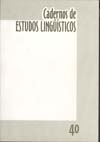Resumo
Studies on language acquisition have shown that the child exhibits a top-down trajectory in the acquisition of the prosodic hierarchy, starting with the organisation of the upper (intonational) prosodic levels. Rhythmic readjustments and postlexical secondary stress are later acquisitions. Prosodic disturbances of aphasia and dysarthria have been connected to the question of brain-damage lateralisation and linguistic processing. Subjects damaged in their right hemisphere are said to be dysprosodic; they produce few Fo variations, Fo flattenning, slow tempo. Prosody is said to be reasonably preserved in Broca´s subjects and well preserved in fluent (Wernicke) aphasia subjects. A comparative study was carried out with two subjects, one aphasic and one dysarthric. Some prosodic difficulties were observed in the speech of fluent aphasic subjects, related to the prosodic hierarchy, to the metrical grid and to syllable structure, respectively. On the other hand, the correct placement of pauses in the frontiers of upper domains of the dysarthric subject shows preservation of the prosodic hierarchy. Pitch-direction is also preserved, with short pitch-range. In both cases, the upper domains of the prosodic hierarchy are preserved.Referências
CODE, C. (1988). Language, aphasia and the right hemisphere. Londres, John Wiley and Sons.
DANLY, M., COOPER, W.E. & SHAPIRO, B. (1983). Fundamental frequency, language processing, and linguistic structure in Wernicke’s aphasia. Brain and Language, 19: 1-24.
FELLIZATTI, P. (1998). Aspectos fonético-fonológicos da disartria pós-traumática: um estudo de caso. Dissertação de mestrado inédita. IEL/ UNICAMP.
GRODZINSKY, Y. (1990). Theoretical perspectives on language deficits. Cambridge, Massachussetts, The M.I.T. Press.
JAKOBSON, R. (1968). Child language, aphasia and phonological universals. Haia, Mouton.
LAVER, J. (1980). The phonetic description of voice quality. Cambridge: Cambridge University Press.
MOER, I. & SUNDET, K. (1996). Production and perception of word tones (pitch accents) in patients with left and right hemisphere damage. Brain and language, 53, 267-281.
MORATO, E. & FREITAS, M. (1993). Algumas questões sobre prosódia no contexto neurolingüístico. Cadernos de Estudos Lingüísticos, IEL/UNICAMP.
NESPOR, M. & VOGEL, I. (1986). Prosodic phonology. Dordrecht, Foris Publications.
NICKELS, L & HOWARD, D. (1999). Effects of lexical stress on aphasic word production. Clinical Linguistics and Phonetics, vol. 13, nº 4.
SCARPA, E.M. (2000). O recurso a níveis prosódicos superiores na aquisição e na afasia. PaLavra, nº 6, 48-62. PUC, Rio de Janeiro.
SCARPA, E.M. (no prelo). Dificuldades prosódicas em sujeitos cérebro-lesados. Revista ALFA, UNESP (volume em homenagem a Francisco da Silva Borba) .
SELKIRK, E. (1984). Phonology and syntax. The relation between sound and structure. Cambridge, Mass.: M.I.T. Press
WERNIGE, D (1993). Disorders of prosody in aphasia. In: Blanken, G.; Dittmann, J.; Grimm, H.; Marshall, J. & C-W. Wallesch (orgs.). Linguistic disorders and pathologies. An International Handbook. Berlim, Walter de Gruyter.
O periódico Cadernos de Estudos Linguísticos utiliza a licença do Creative Commons (CC), preservando assim, a integridade dos artigos em ambiente de acesso aberto.

